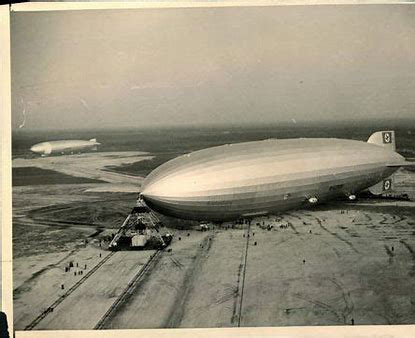
LAKEHURST – It’s been 86 years since that fateful day, and people are still telling stories of the Hindenburg disaster that took place on May 6, 1937.
Navy Lakehurst Historical Society (NLHS) and Joint Base McGuire-Dix-Lakehurst (JBMDL) hosted a memorial event that took place outside Hangar One which used to house the famous airship. Among those invited were Margherita Thielke, who witnessed the disaster as a child, and Lakehurst resident Allen Hurley, the grandson of Allen Hagaman who was the one groundcrew worker who had perished.

Hurley told said that he learned a lot from a recent article that appeared in The Manchester Times from research that NLHS member Jim Larsen of Manchester shared. Larsen was also present at the evening’s ceremony.
“My grandfather was on the tail section and he was 52, he ran (from the falling burning airship) and he tripped on the track where they could turn it and naturally it came down on him causing injury and mostly burns,” Hurley said.
Thielke said “I’m 97 now. I lived in Haledon, New Jersey. My half-brother Mike and my father went to see the Hindenburg land. My brother was 14 and I was 11. We went in a 1934 Chevrolet Coupe with a rumble seat. It took us three hours to get here because there were no highways.”

“The Hindenburg was late and we waited until quarter after 7. We saw it coming and the Hindenburg was really high. It came in to land but all of a sudden, I saw a flash. I thought it was fireworks,” she added.
She recalled, “everyone started to scream and it got so hot and we ran for our lives and they just ran right over me. I could find my father and brother so I just stood where we were standing and watched the wounded people being put on the Navy truck. One man was inside and all his skin was hanging from his face.”
Dr. Horst Schirmer was a special guest. His father, Max Schirmer, was an engineer that worked on the Hindenburg. He noted the name Hindenburg came from a German Field Marshal from World War I. “It was built like a piece of art. It had eight crossings of the region and nothing ever happened.”
He added that there were two factors that contributed heavily to the cause of the disaster, a sharp angle turn being one of them. This was believed to have been done as part of a rush job to land.
The landing was postponed due to bad weather so there was a rush to get back on schedule because many of the passengers needed to get back to Germany and then head to the coronation of King George VI in England, he said. The irony of the King Charles III coronation held earlier in the day of the ceremony was also noted.

The other factor was “a leak (of hydrogen), they took action and sent six members of the crew into the bow but then came the electricity which caused the first explosion and led to the second explosion.”
Once again, NLHS President Carl Jablonski served as master of ceremonies for the event that included welcome remarks from JBMDL Deputy Commander U.S. Navy Captain Frank T. Ingargiola and guest speakers Schirmer, NLHS Vice President Jennifer Suwak, and County Commissioner Virginia Haines. Members of the Lakehurst Historical Society including their new president Bernadette Dugan and former president George Oglesby were among those in the audience.
Jablonski read the names of those passengers, crew and grounds worker who died in the Hindenburg tragedy and wreaths were presented for the U.S. Army, U.S. Marines, U.S. Navy, U.S. Air Force, U.S. Coast Guard, U.S.A.F. Space Force and Prisoner of War/Missing In Action.
Captain Ingargiola noted the lives lost and that the audience was seated at the exact location of “a part of American history. Today we honor those lost and their families. We commemorate the Hindenburg disaster on the same date, time and place where it occurred. This disaster effectively brought the German transatlantic flights to an end.”
“We are here to honor those who rushed toward the flames to save lives, many of which were sailors stationed here at the time. This disaster claimed 36 lives which included 13 passengers, 22 crew members and one worker on the ground,” Captain Ingargiola said. “There were 62 survivors, many of whom jumped from the flames and burning wreckage and ran as fast as they could. They were the lucky ones.”
Suwak’s remarks noted a future NLHS project that will help bring history alive. “One of the big initiatives we have right now is to continue beta testing our AR augmented reality and fly virtual replicas of some of our lighter than air and other aircraft so we can preserve that history, explore it and teach it with modern technology.”

“Imagine seeing a nearly exact replica of the Hindenburg flying above us in the airfield through an Ipad on a museum app. We are looking for support with the project. It is incredible technology,” she added.
Prior to the ceremony, Ocean County Historical Society (OCHS) member Bill Shannon handed Jablonski a piece of material from an airship and asked him if he thought it might be from the Hindenburg.
“This was what was on the Navy airships, the K-ships that went out for U-Boat patrol,” Jablonski said, quickly identifying the item.

Shannon told The Manchester Times, “We got it as a donation and we want to put it out on display but we want something with it to identify it. We have a lot of stuff for the Hindenburg there already (at the OCHS museum in Toms River) plateware, pictures of some of the people, survivors and some that didn’t make it.”






